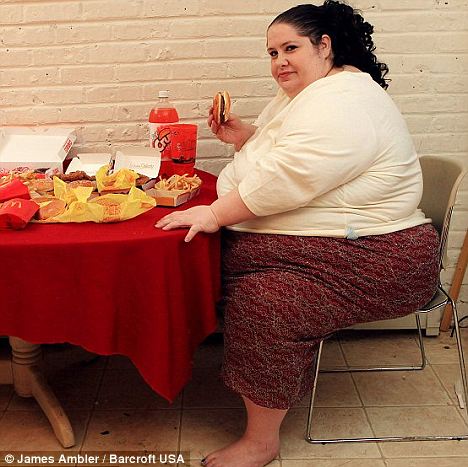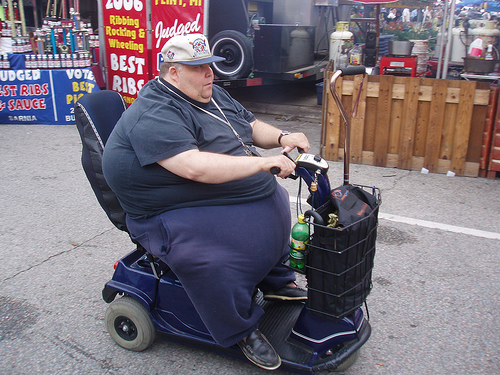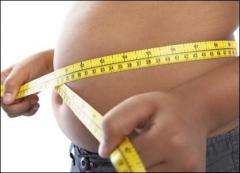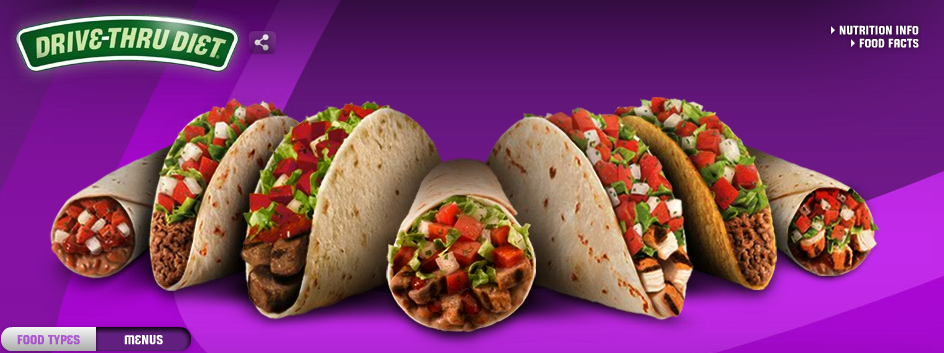His clothes are custom-made and sometimes he goes naked to avoid having to get dressed. But now his frame has shrunk so much he can get about on a special motorised chair.
Mr Mason admitted to eating 20,000 calories a day, eight times the amount needed by an average man.
Firefighters had to demolish the front wall of his former home so they could drive a fork lift truck inside to lift him out and put him into an ambulance when he needed a hernia operation in 2002.
‘I don’t want to go back to the old me. I’m determined to carry on losing weight until I’m a normal size. I’m much happier and healthier now.’
The former postman, who is is still believed to be the world’s heaviest man, had part of his stomach stapled off so that all the food he ate went into a small ‘pouch’, vastly restricting the amount he could eat. He was driven 143 miles in an ambulance with reinforced beds to have the operation at the specialist St Richard’s Hospital in Chichester. Doctors put him on a crash diet to bring his weight down to a safe level so the operation could go ahead.
His care bill costs taxpayers an estimated £100,000 a year and is believed to have topped £1million over the last 15 years.
World’s heaviest man Paul Mason has lost 20 stone after gastric bypass surgery | Mail Online









